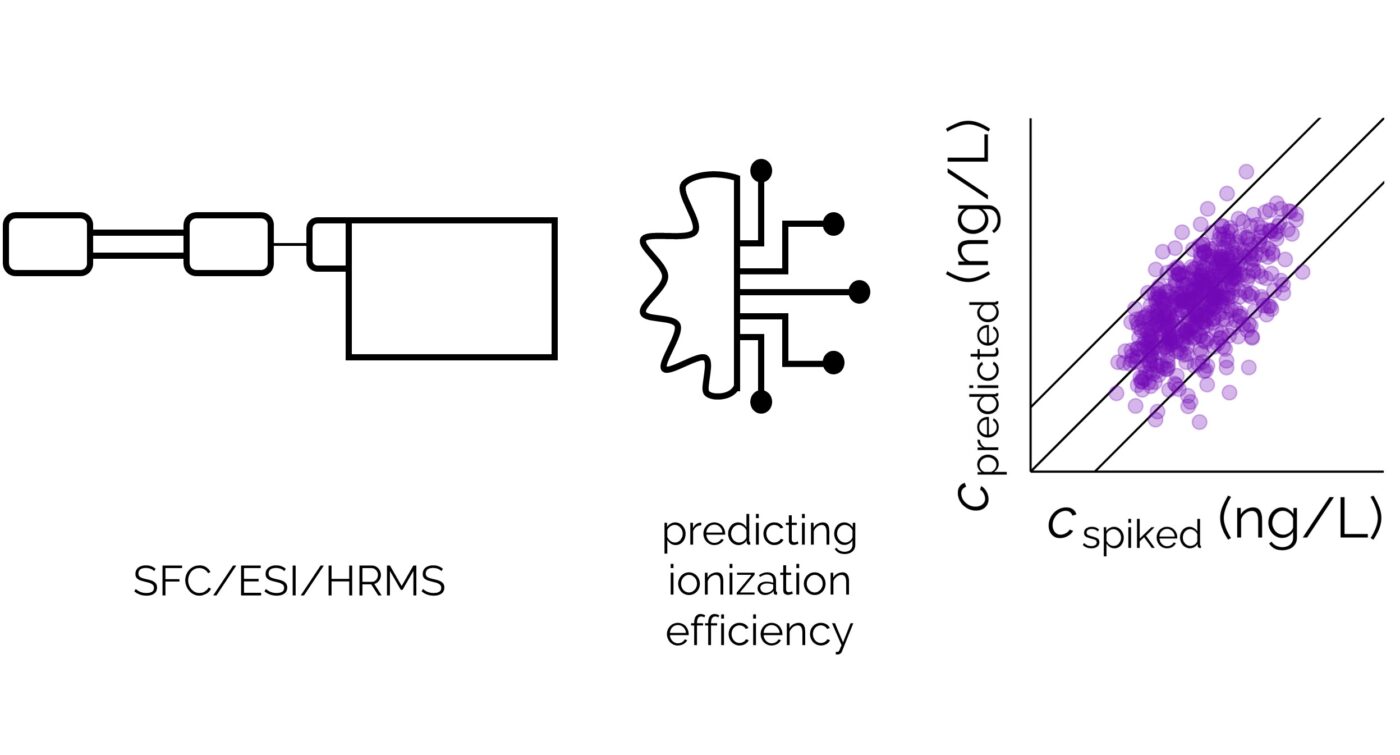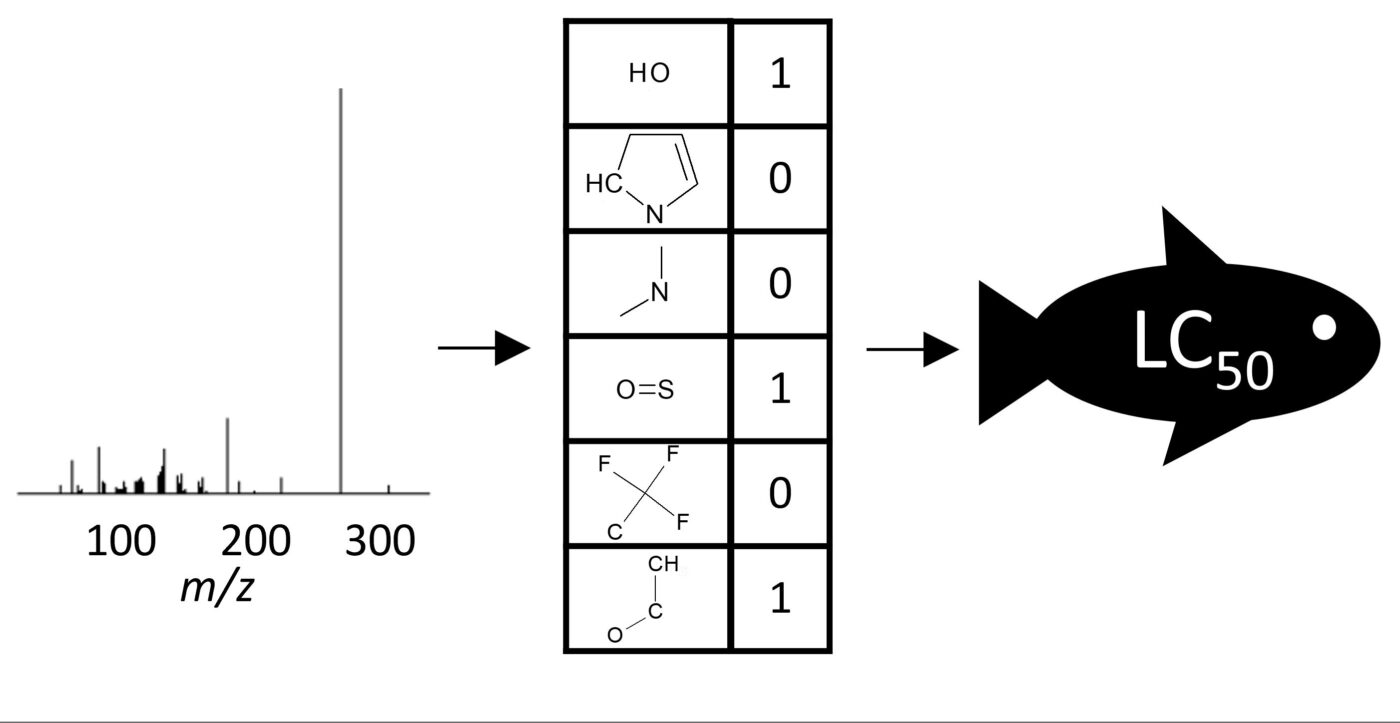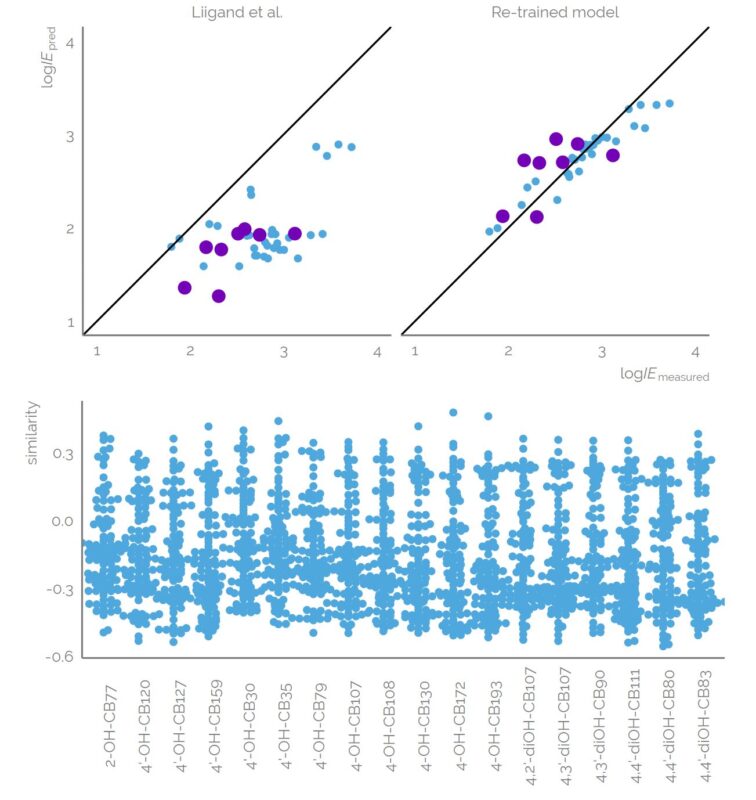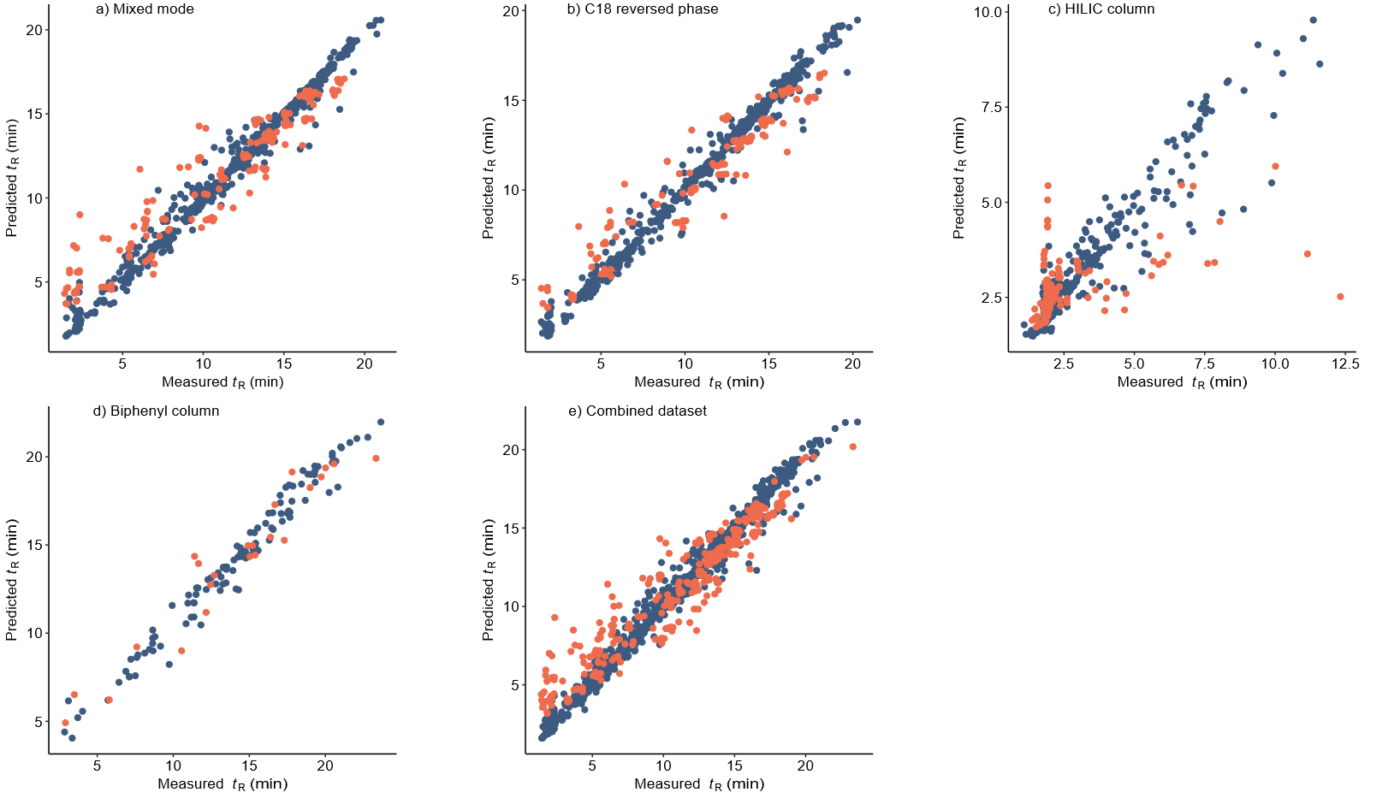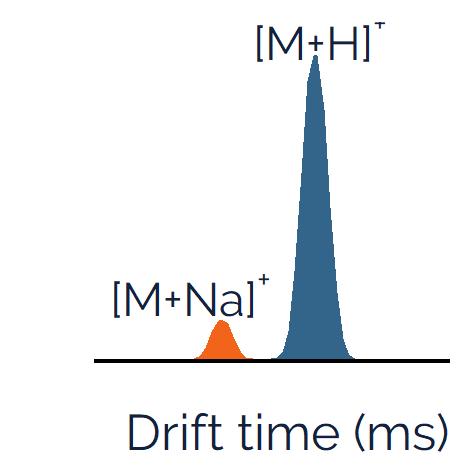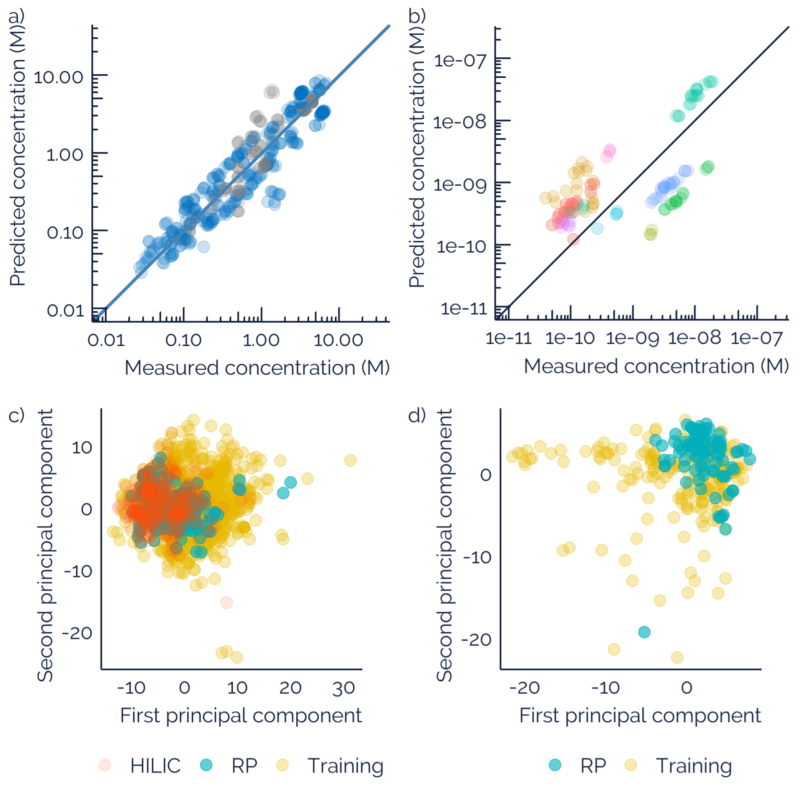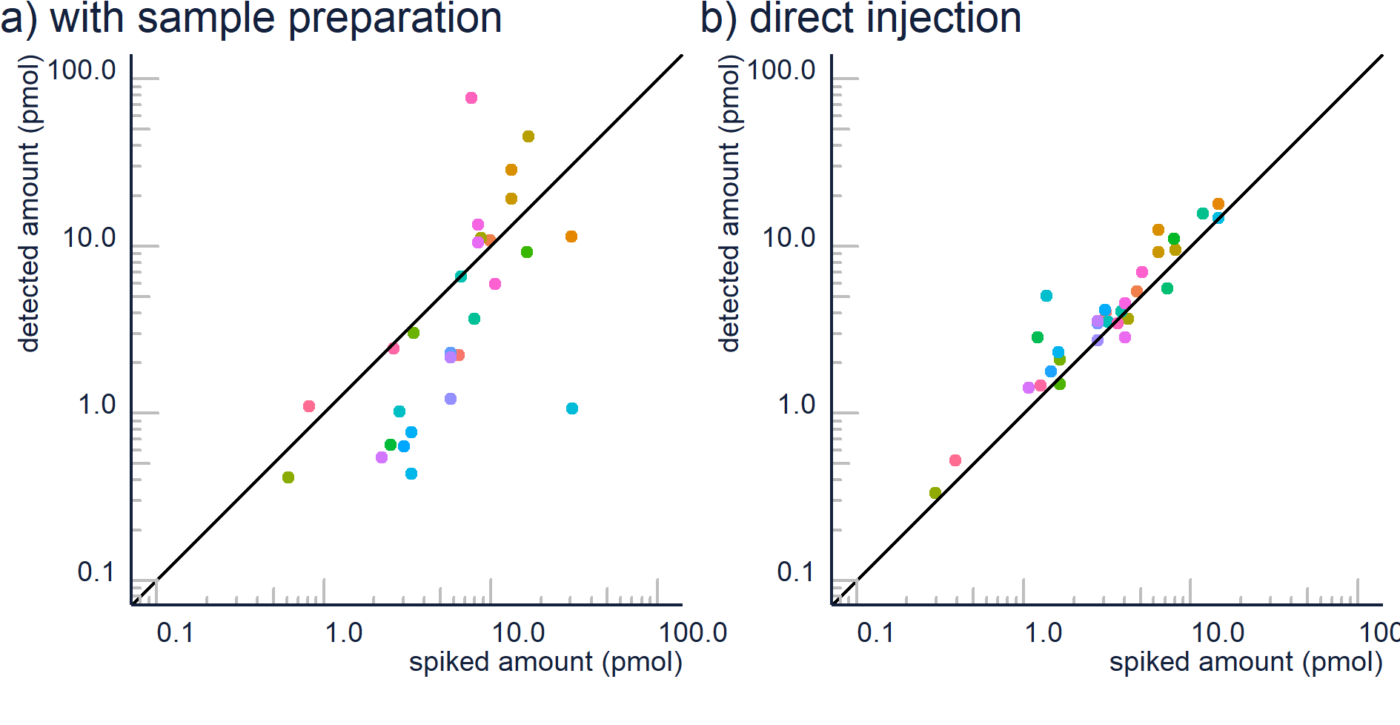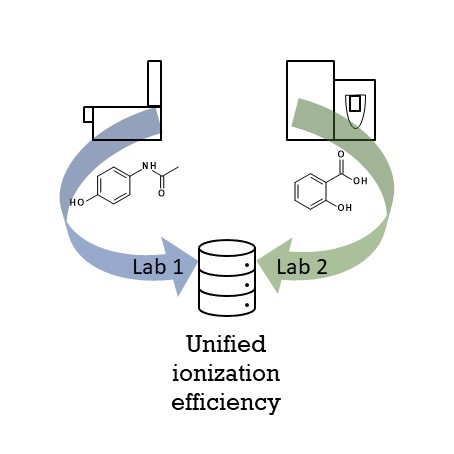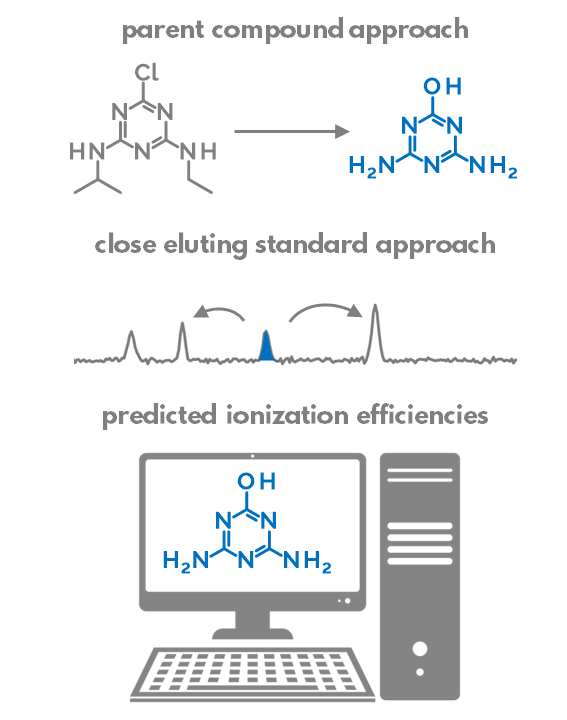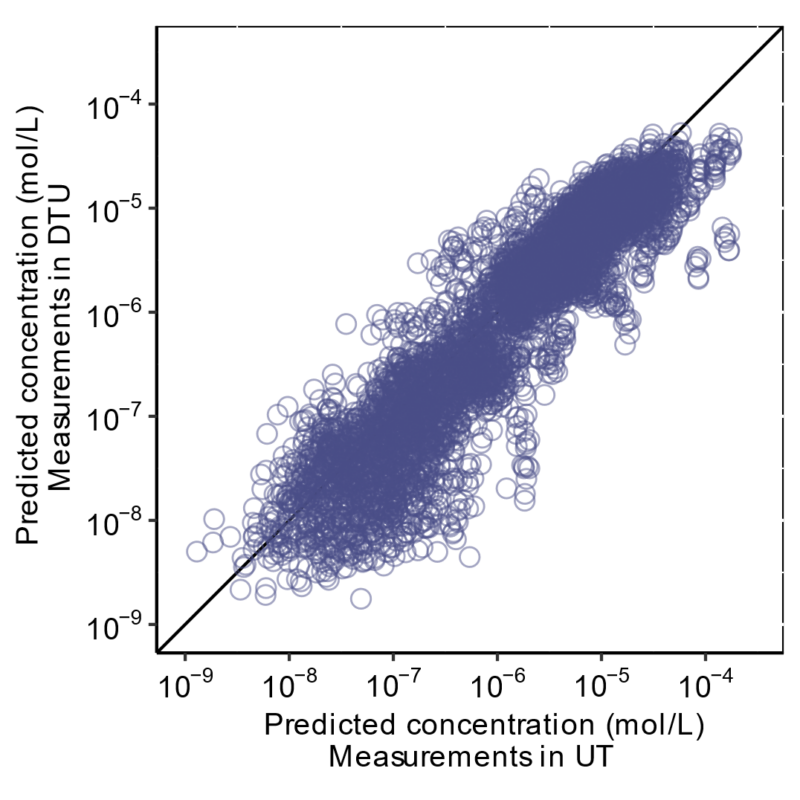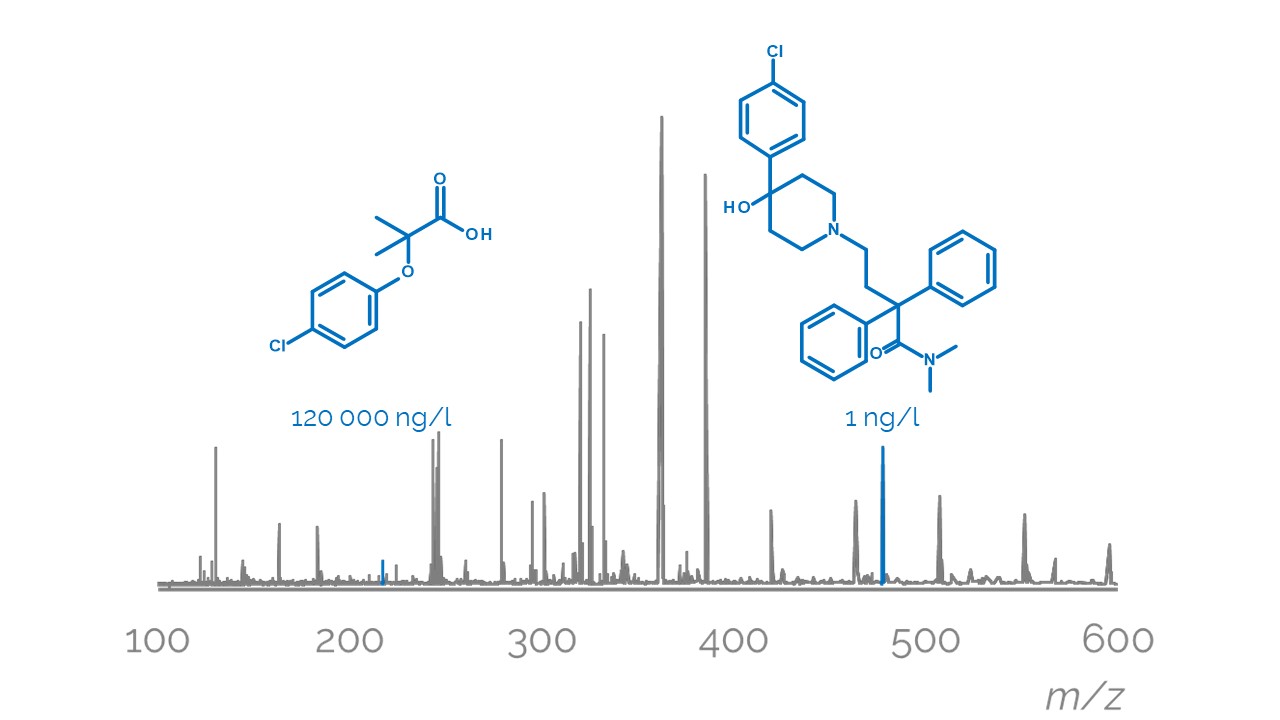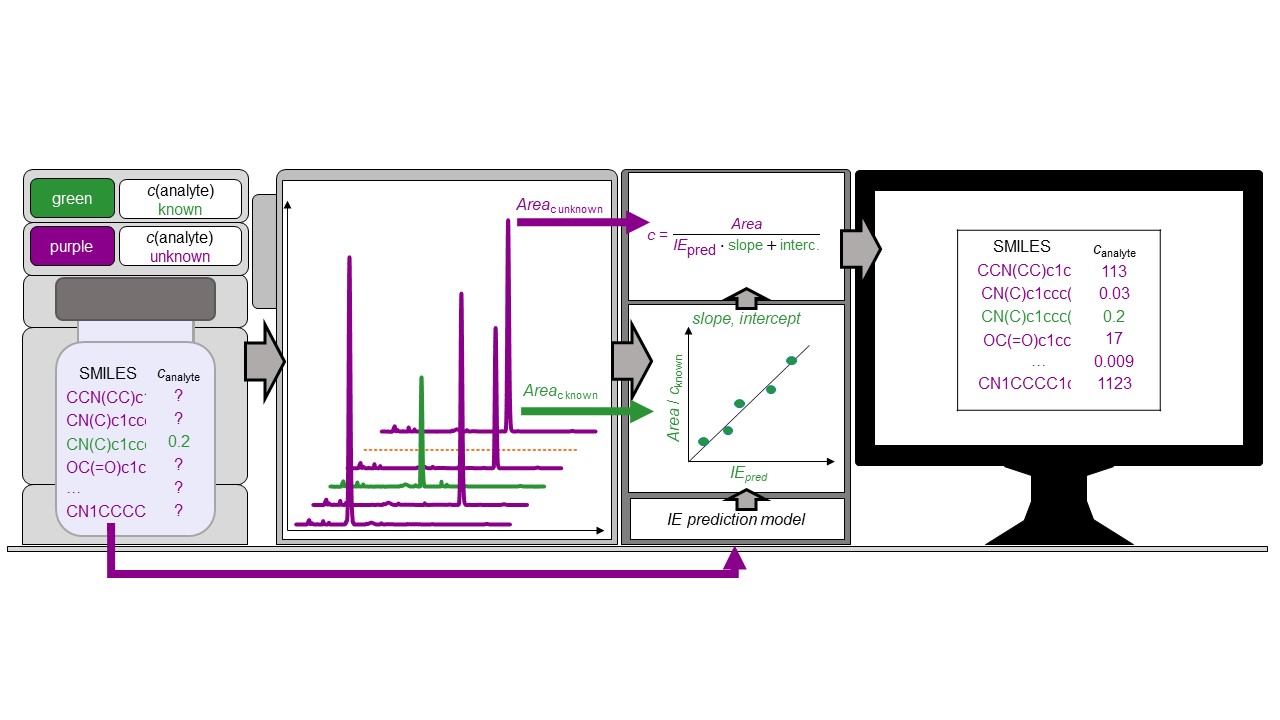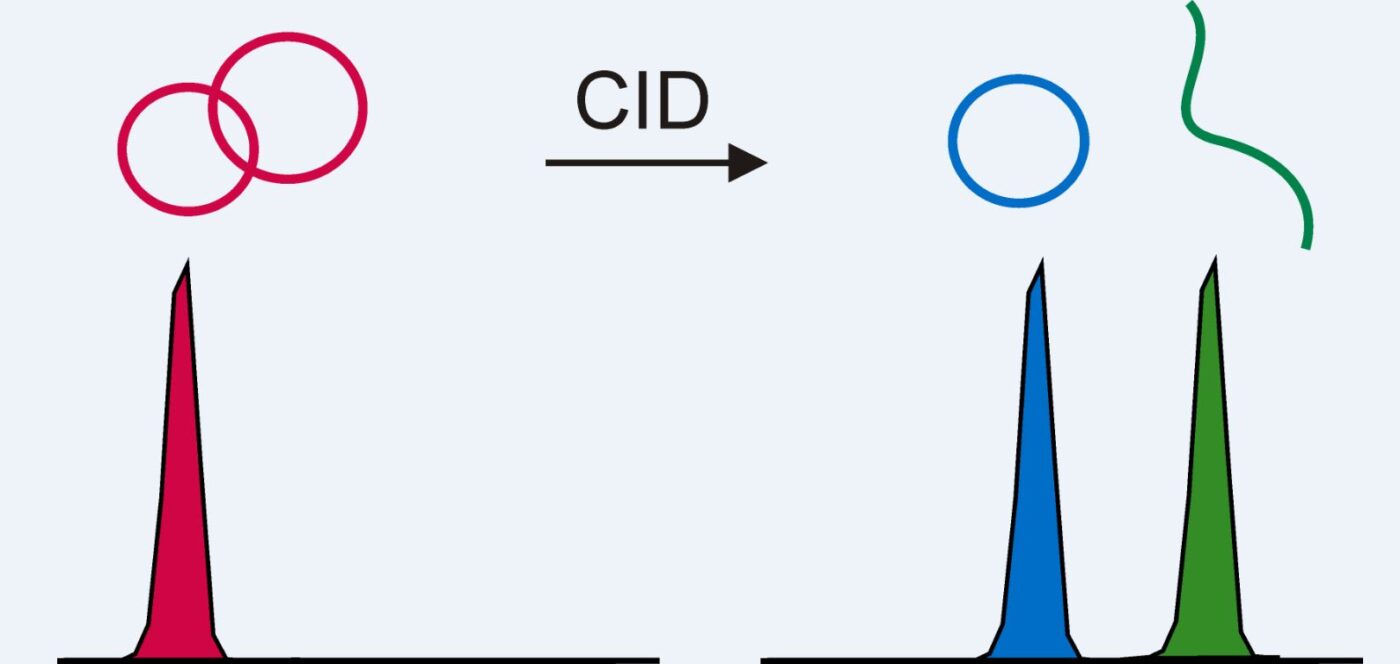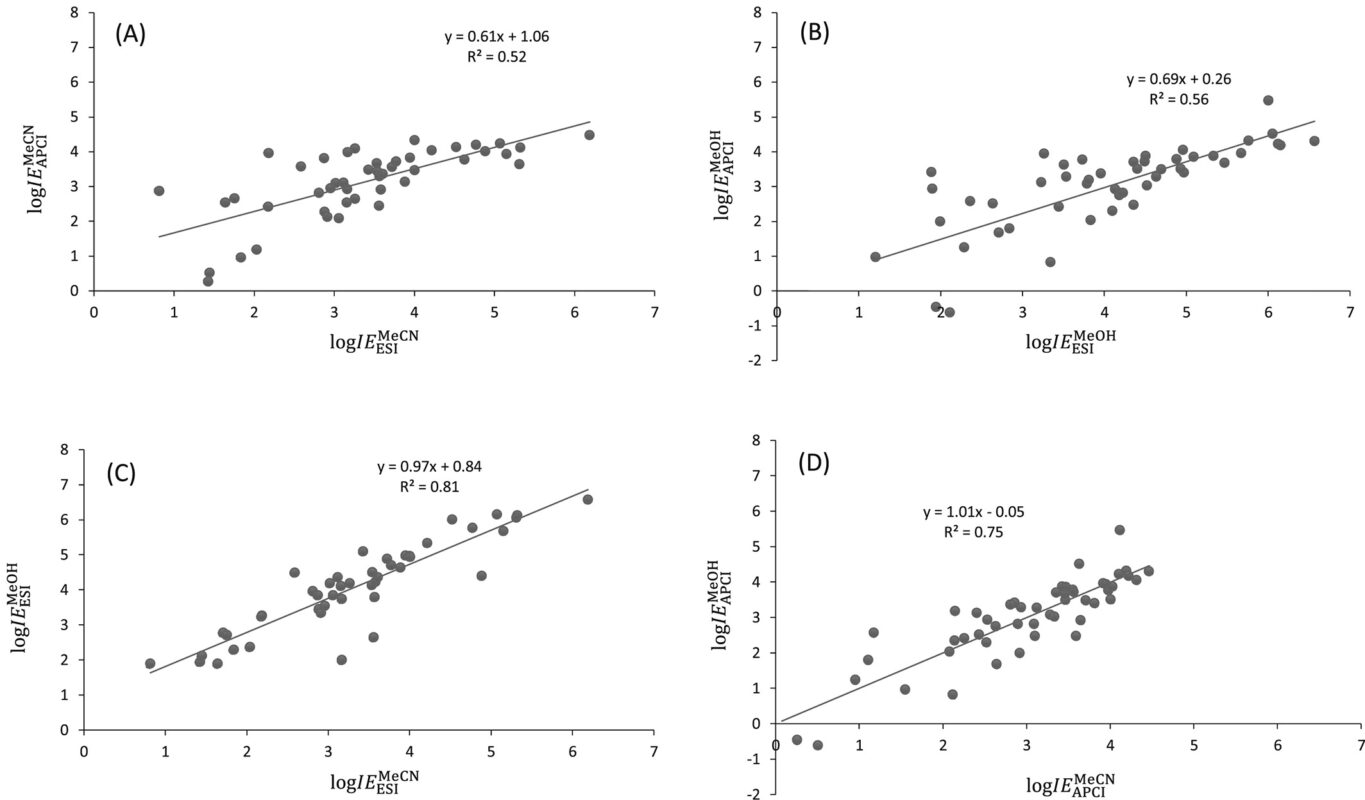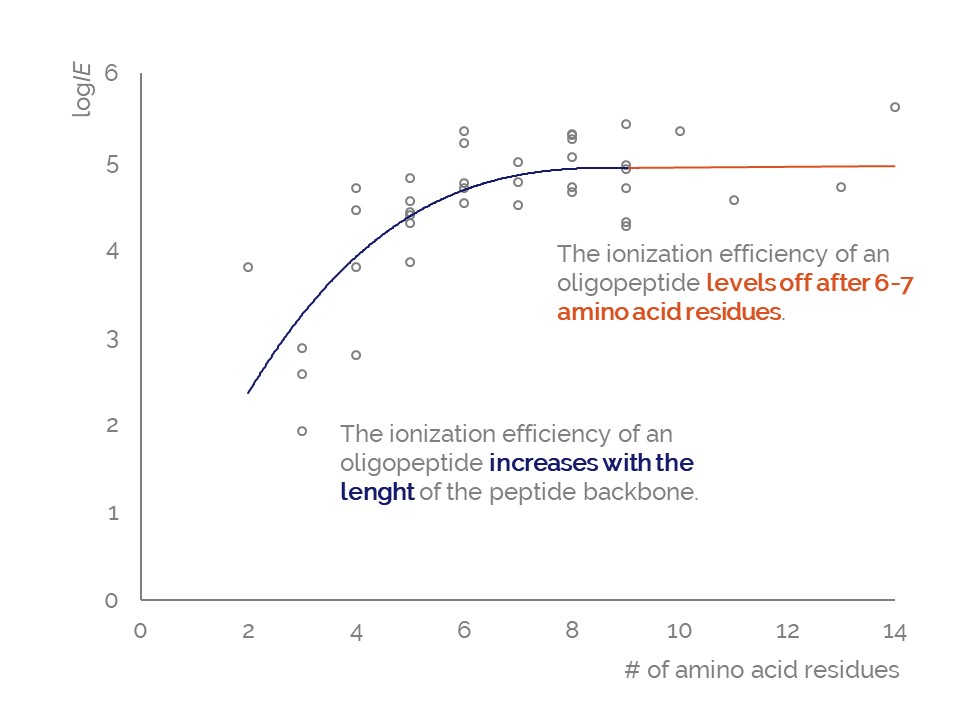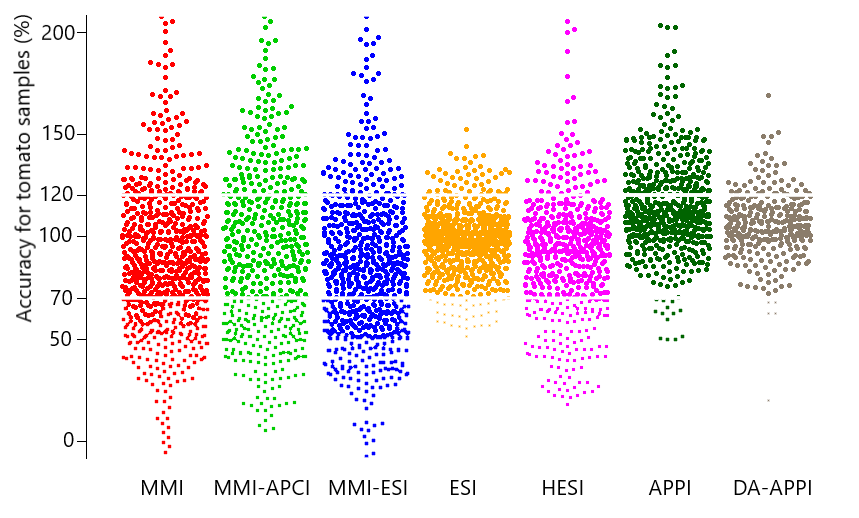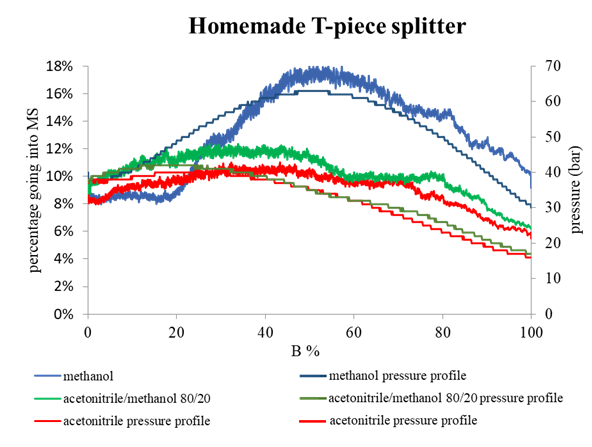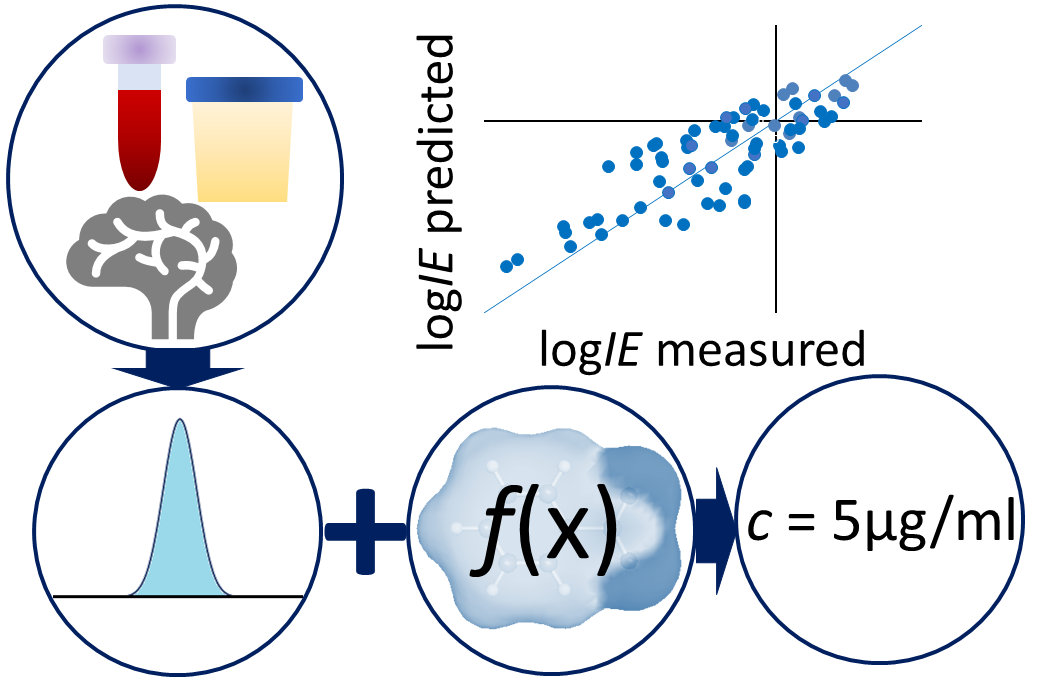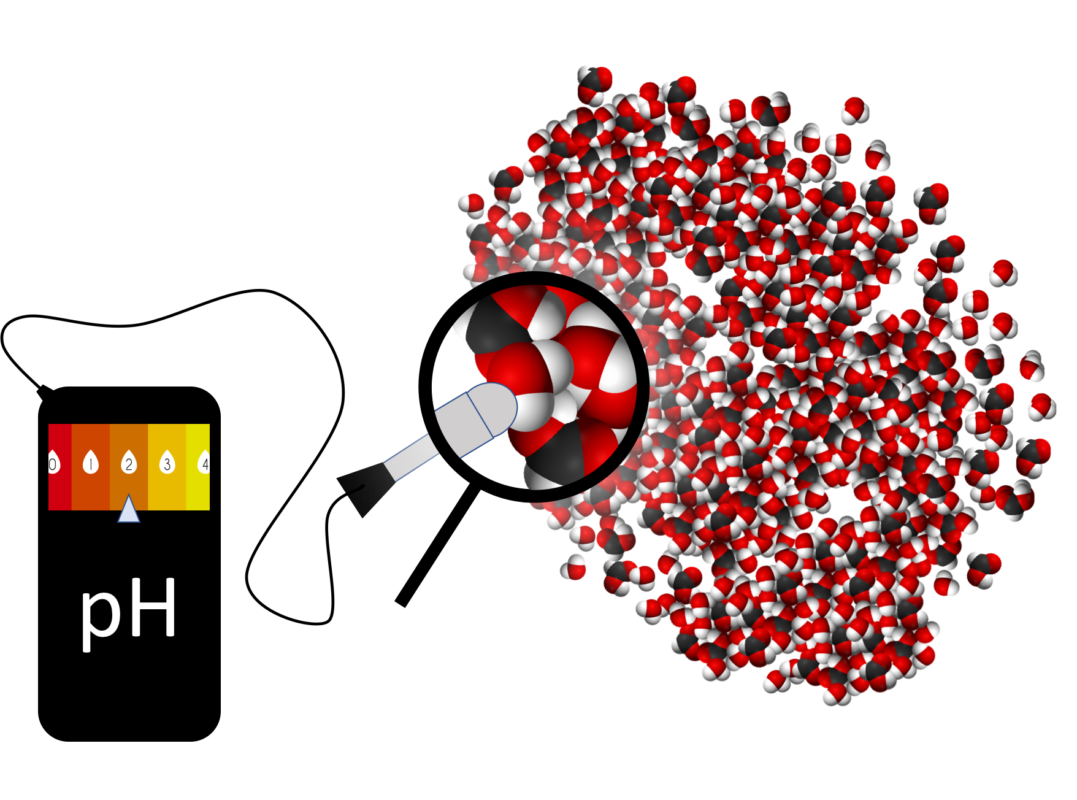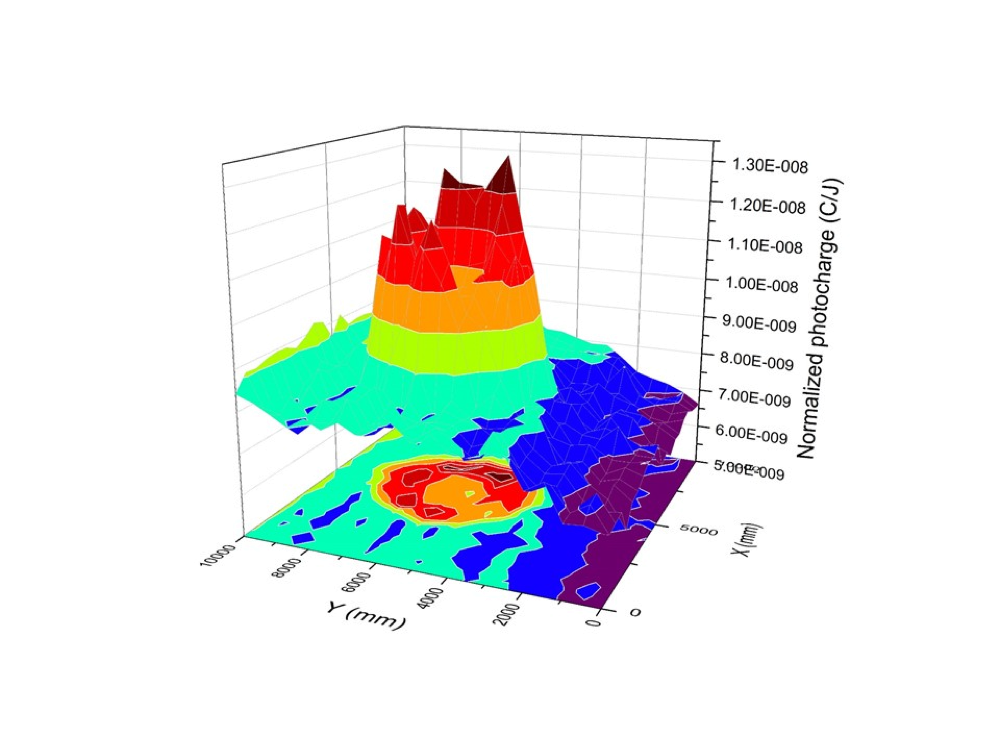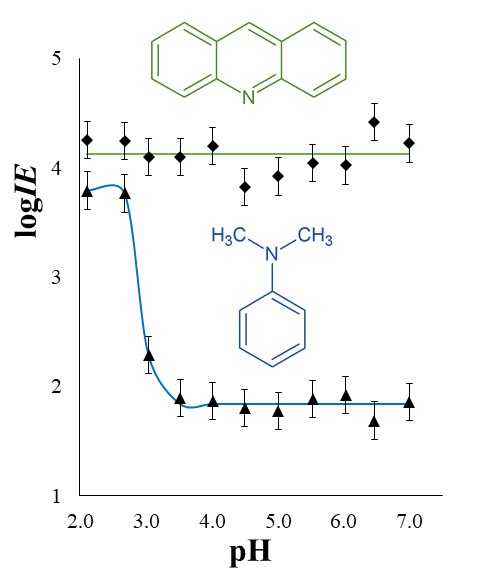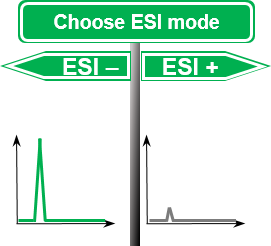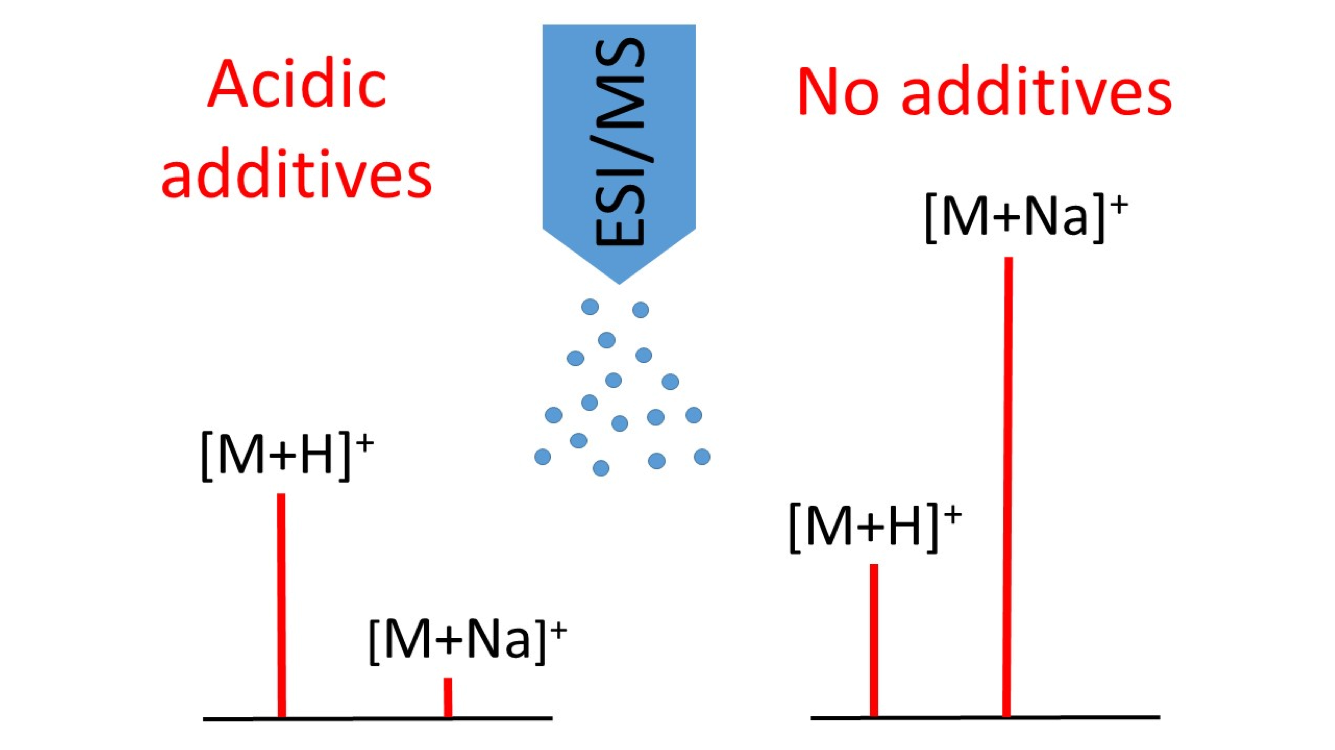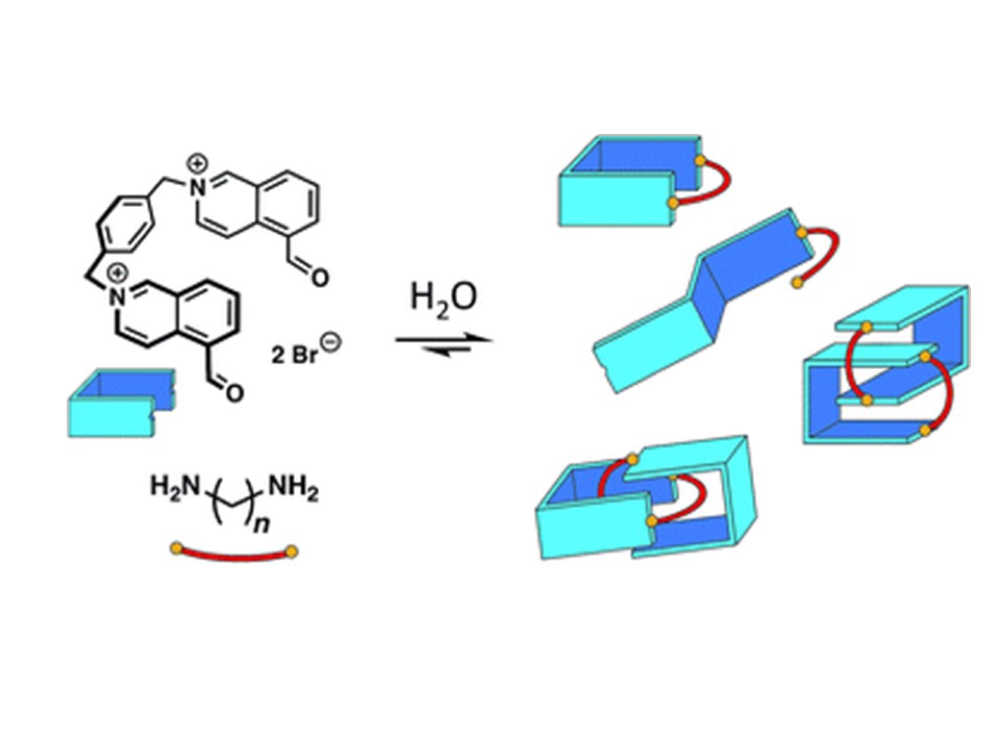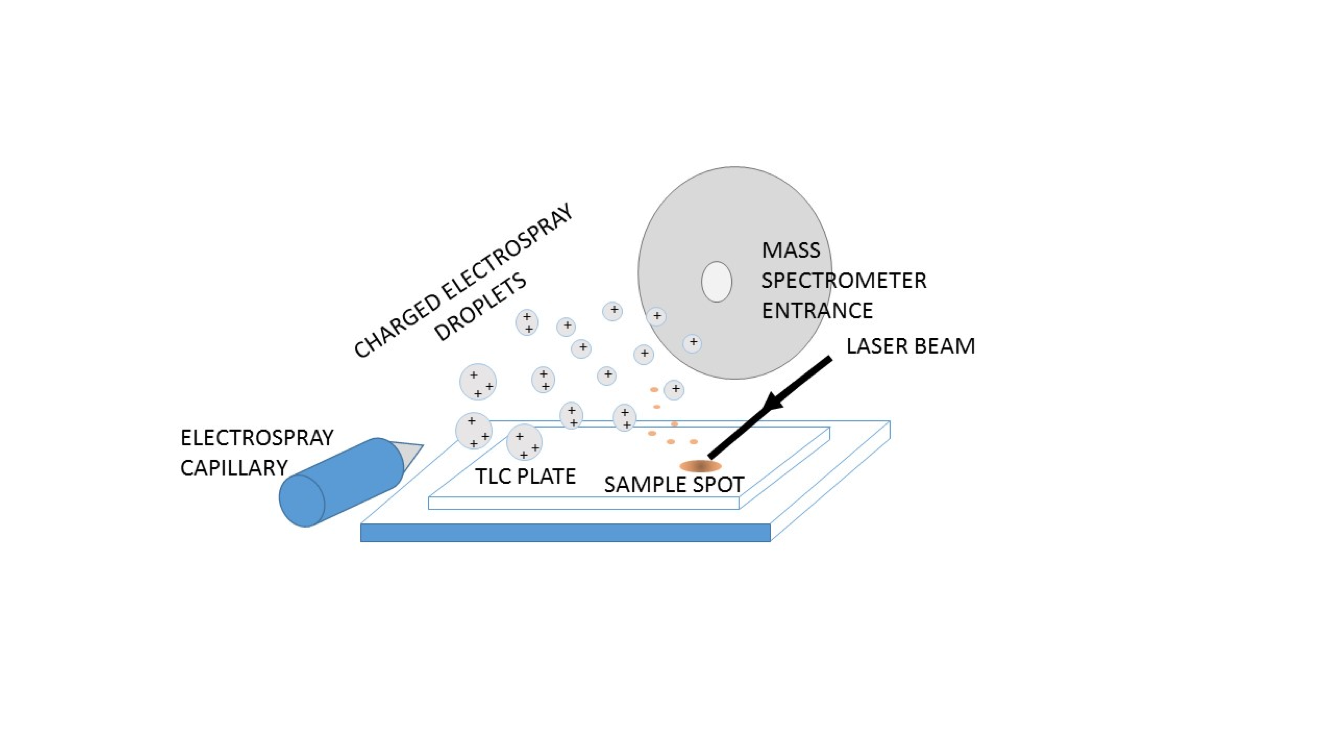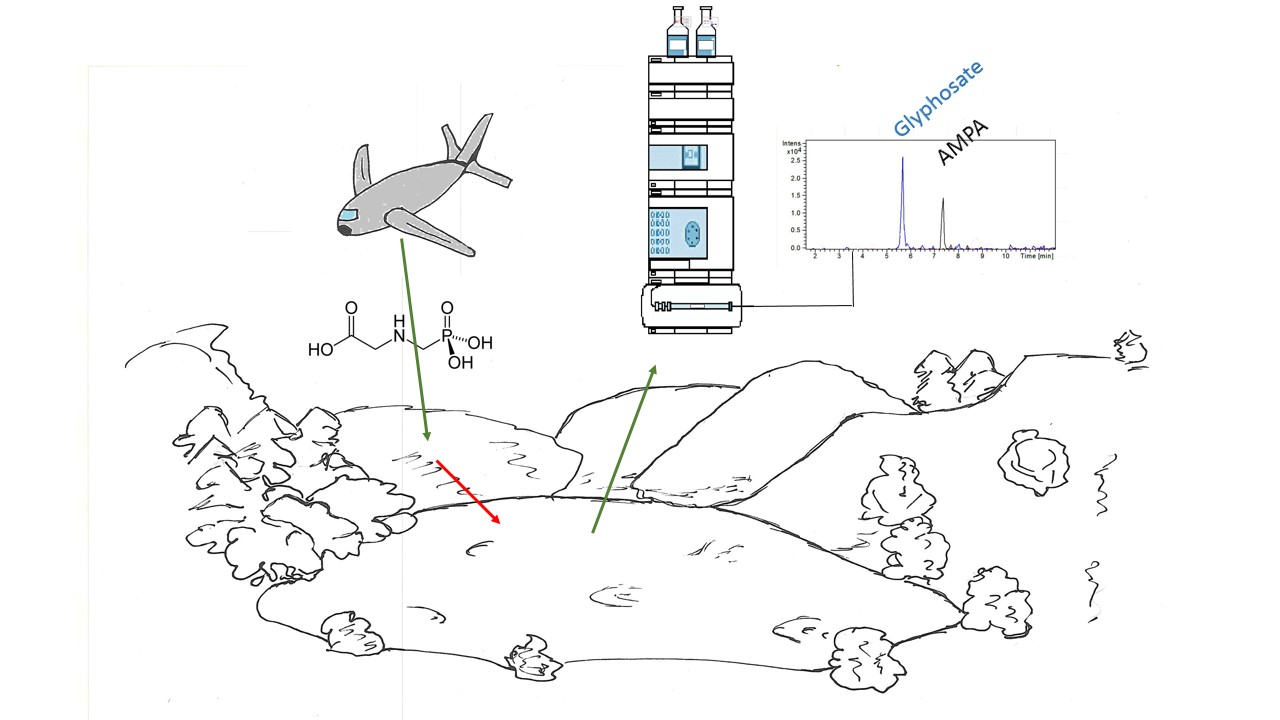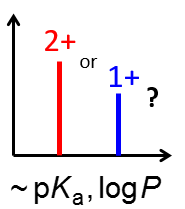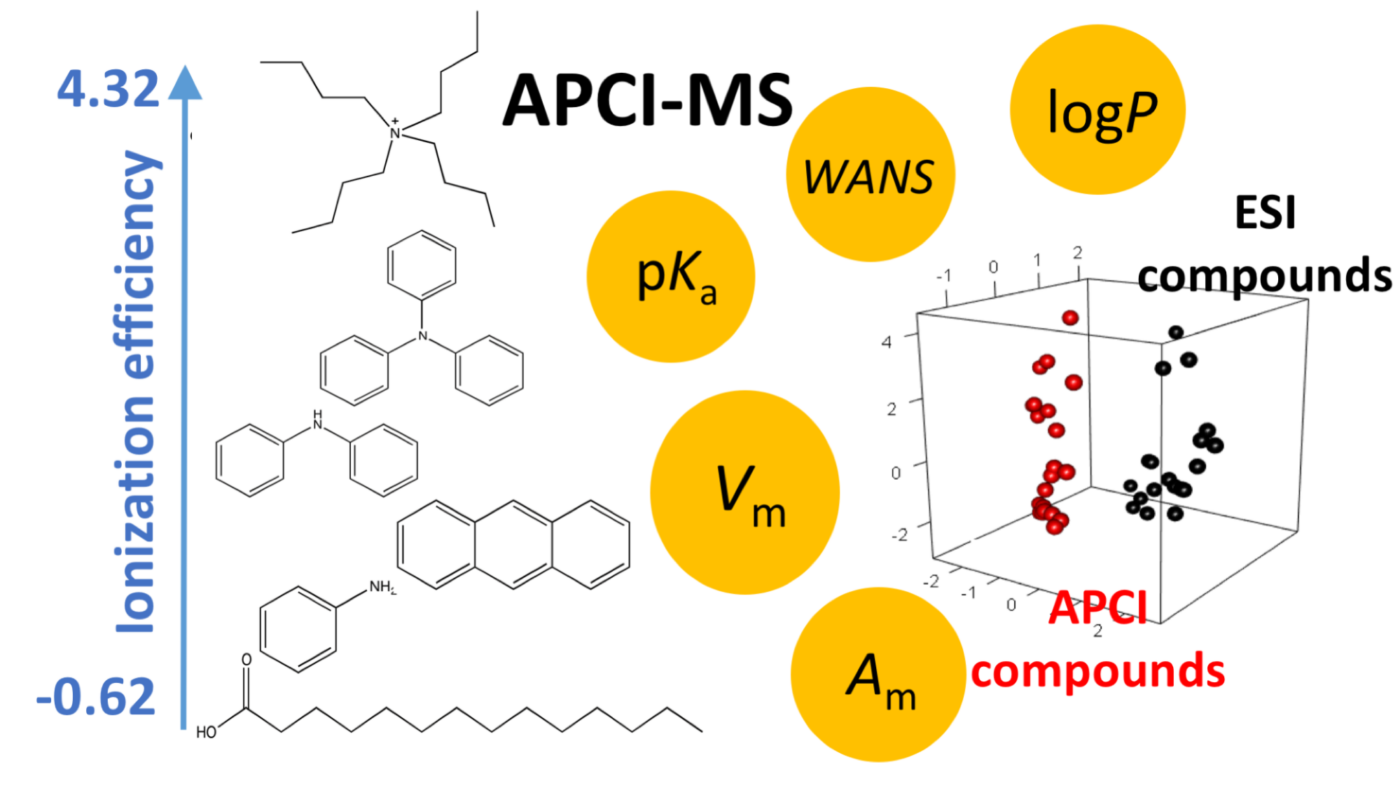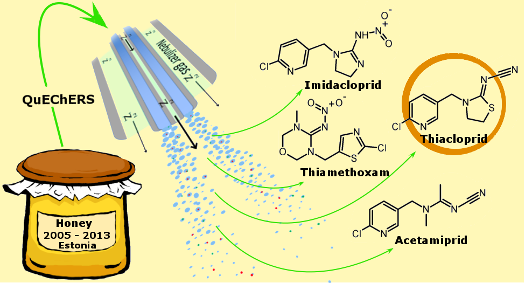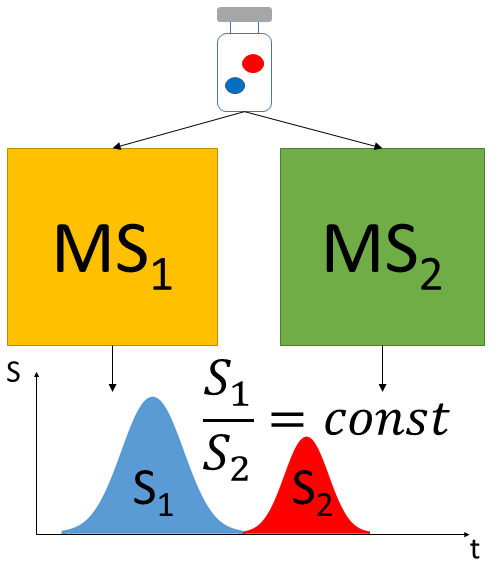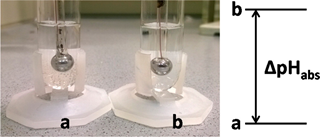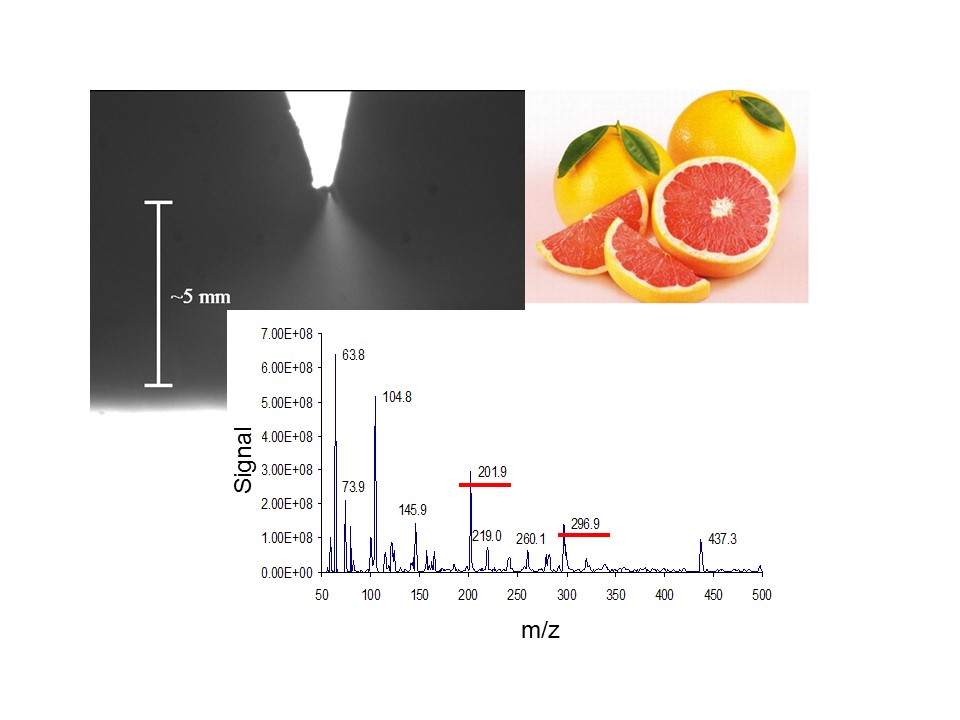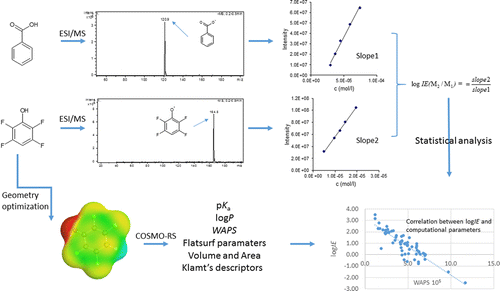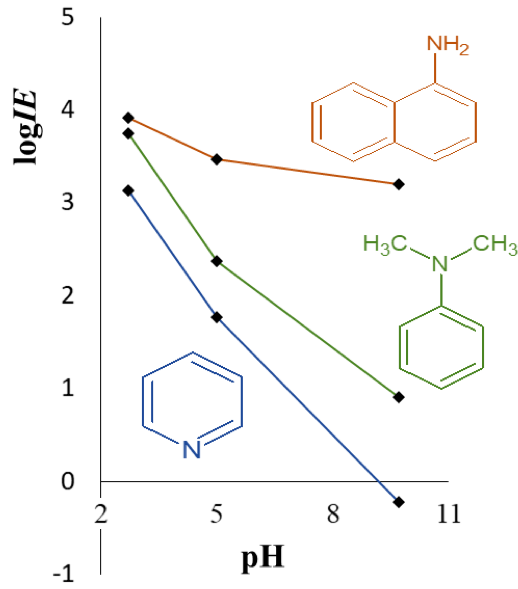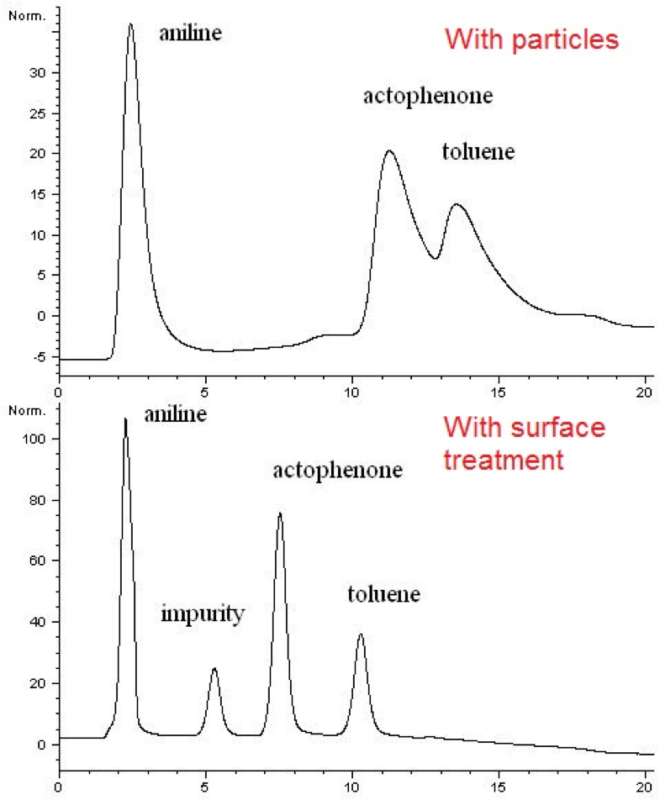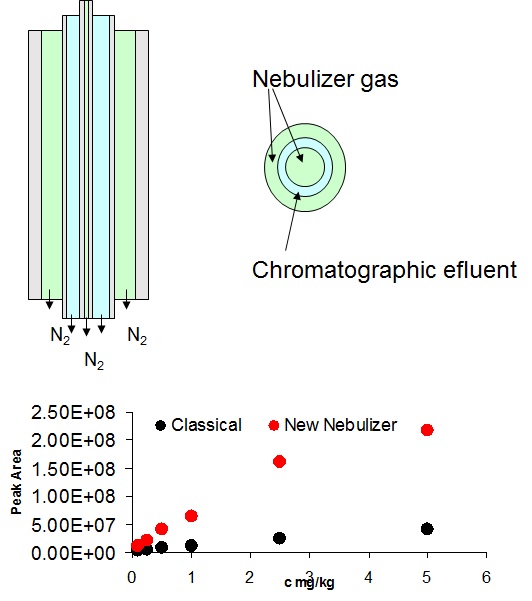Scientometric review: Concentration and toxicity assessment in environmental non-targeted LC/HRMS analysis
Helen Sepman, Louise Malm, Pilleriin Peets, Anneli Kruve
TrEAC 2023
DOI: 10.1016/j.teac.2023.e00217
Non-targeted screening with LC/HRMS is a go-to approach to discover relevant contaminants in environmental water samples that contain an abundance of chemicals. The rapidly increasing popularity of non-targeted LC/HRMS screening has initiated development of a diverse set of methods for assessing the concentration and toxicity of the detected chemicals. This review aims to benchmark the trends in the environmental NTS literature with particular focus on (1) methods used for the quantification of tentatively identified chemicals that lack analytical standards, (2) methods for assessing the toxicity of detected chemicals, and (3) methods combining the former into a risk evaluation. Here we provide a scientometric review of these strategies based on the Web of Science referenced papers published between 2019 and 2022. General trends show that quantification and toxicity assessments are widely employed in NTS, reaching 66 % and 45 % over four years, respectively. Simultaneously, only 13 % of the papers covered here combine these results into a risk factor or similar. With this review we aim to highlight the advantages and gaps in the approaches used for concentration and toxicity assessment and provide guidelines for more homogeneous data interrogation and extrapolation.
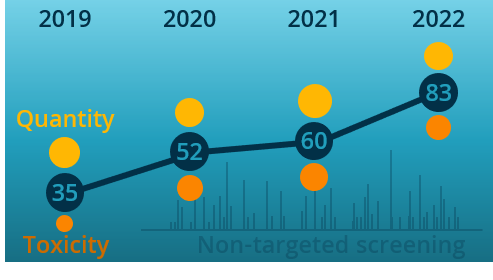
NORMAN guidance on suspect and non-target screening in environmental monitoring
Juliane Hollenter, et al.
Environmental Sciences Europe 2023
DOI: 10.1186/s12302-023-00779-4
Increasing production and use of chemicals and awareness of their impact on ecosystems and humans has led to large interest for broadening the knowledge on the chemical status of the environment and human health by suspect and non-target screening (NTS). To facilitate effective implementation of NTS in scientific, commercial and governmental laboratories, as well as acceptance by managers, regulators and risk assessors, more harmonisation in NTS is required. To address this, NORMAN Association members involved in NTS activities have prepared this guidance document, based on the current state of knowledge. The document is intended to provide guidance on performing high quality NTS studies and data interpretation while increasing awareness of the promise but also pitfalls and challenges associated with these techniques. Guidance is provided for all steps; from sampling and sample preparation to analysis by chromatography (liquid and gas-LC and GC) coupled via various ionisation techniques to high-resolution tandem mass spectrometry (HRMS/MS), through to data evaluation and reporting in the context of NTS. Although most experience within the NORMAN network still involves water analysis of polar compounds using LC-HRMS/MS, other matrices (sediment, soil, biota, dust, air) and instrumentation (GC, ion mobility) are covered, reflecting the rapid development and extension of the field. Due to the ongoing developments, the different questions addressed with NTS and manifold techniques in use, NORMAN members feel that no standard operation process can be provided at this stage. However, appropriate analytical methods, data processing techniques and databases commonly compiled in NTS workflows are introduced, their limitations are discussed and recommendations for different cases are provided. Proper quality assurance, quantification without reference standards and reporting results with clear confidence of identification assignment complete the guidance together with a glossary of definitions. The NORMAN community greatly supports the sharing of experiences and data via open science and hopes that this guideline supports this effort.

Bypassing the identification: MS2Quant for concentration estimations of chemicals detected with nontarget LC-HRMS from MS2 data
Helen Sepman, Louise Malm, Pilleriin Peets, Matthew MacLeod, Jonathan W. Martin, Magnus Breitholtz, Anneli Kruve
Anal Chem 2023
DOI: 10.1021/acs.analchem.3c01744
Nontarget analysis by liquid chromatography – high resolution mass spectrometry (LC-HRMS) is now widely used to detect pollutants in the environment. Shifting away from targeted methods has led to detection of previously unseen chemicals and assessing the risk posed by these newly detected chemicals is an important challenge. Assessing exposure and toxicity of chemicals detected with nontarget HRMS is highly dependent on knowledge of the structure of the chemical. However, the majority of features detected in non-target screening remain unidentified and therefore the risk assessment with conventional tools is hampered. Here we developed MS2Quant, a machine learning model that enables prediction of concentration from fragmentation (MS2) spectra of detected, but unidentified chemicals. MS2Quant is an xgbTree algorithm-based regression model developed using ionization efficiency data for 1191 unique chemicals that spans 8 orders of magnitude. The root means square errors of the training and test sets were 0.55 (3.5×) and 0.80 (6.3×) log-units, respectively. In comparison, ionization efficiency prediction approaches that depend on assigning an unequivocal structure typically yield errors from 2× to 6×. The MS2Quant quantification model was validated on a set of 39 environmental pollutants and resulted in mean prediction error of 7.4×, geometric mean of 4.5× and median of 4.0×. For comparison, a model based on PaDEL descriptors that depends on unequivocal structural assignment was developed using the same dataset. The latter approach yielded comparable mean prediction error of 9.5×, geometric mean of 5.6× and median of 5.2× on the validation set chemicals when the top structural assignment was used as input. This confirms that MS2Quant enables to extract exposure information for unidentified chemicals which, although detected, have thus far been disregarded due to lack of accurate tools for quantification. The MS2Quant model is available as an R-package in GitHub for improving discovery and monitoring of potentially hazardous environmental pollutants with non-target screening.
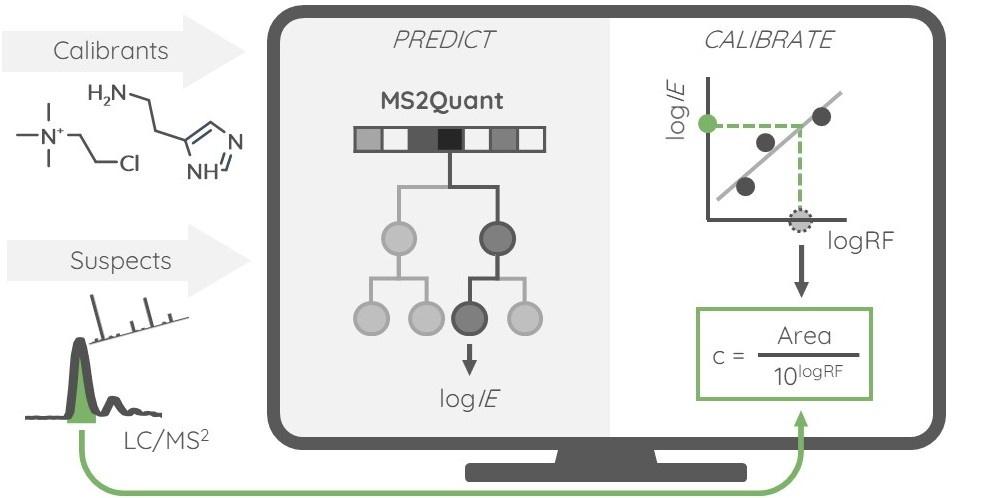
Mobile phase and column chemistry selection for high sensitivity non-targeted LC/ESI/HRMS screening of water
Amina Souihi, Miklos Peter Mohai, Jonathan W Martin, Anneli Kruve
Anal Chim Acta 2023
DOI: 10.1016/j.aca.2023.341573
Systematic selection of mobile phase and column chemistry type can be critical for achieving optimal chromatographic separation, high sensitivity, and low detection limits in liquid chromatography electrospray high resolution mass spectrometry (LC/MS). However, the selection process is challenging for non-targeted screening where the compounds of interest are not preselected nor available for method optimization. To provide general guidance, twenty different mobile phase compositions and four columns were compared for the analysis of 78 compounds with a wide range of physicochemical properties (logP range from −1.46 to 5.48), and analyte sensitivity was compared between methods. The pH, additive type, column, and organic modifier had significant effects on the analyte response factors, and acidic mobile phases (e.g. 0.1% formic acid) yielded highest sensitivity. In some cases, the effect was attributable to the difference in organic modifier content at the time of elution, depending on the mobile phase and column chemistry. Based on these findings, 0.1% formic acid, 0.1% ammonia and 5.0 mM ammonium fluoride were further evaluated for their performance in non-targeted LC/ESI/HRMS analysis of wastewater treatment plan influent and effluent, using a data dependent MS2 acquisition and two different data processing workflows (MS-DIAL, patRoon 2.1) to compare number of detected features and sensitivity. Both data-processing workflows indicated that 0.1% formic acid yielded the highest number of features in full scan spectrum (MS1), as well as the highest number of features that triggered fragmentation spectra (MS2) when dynamic exclusion was used.
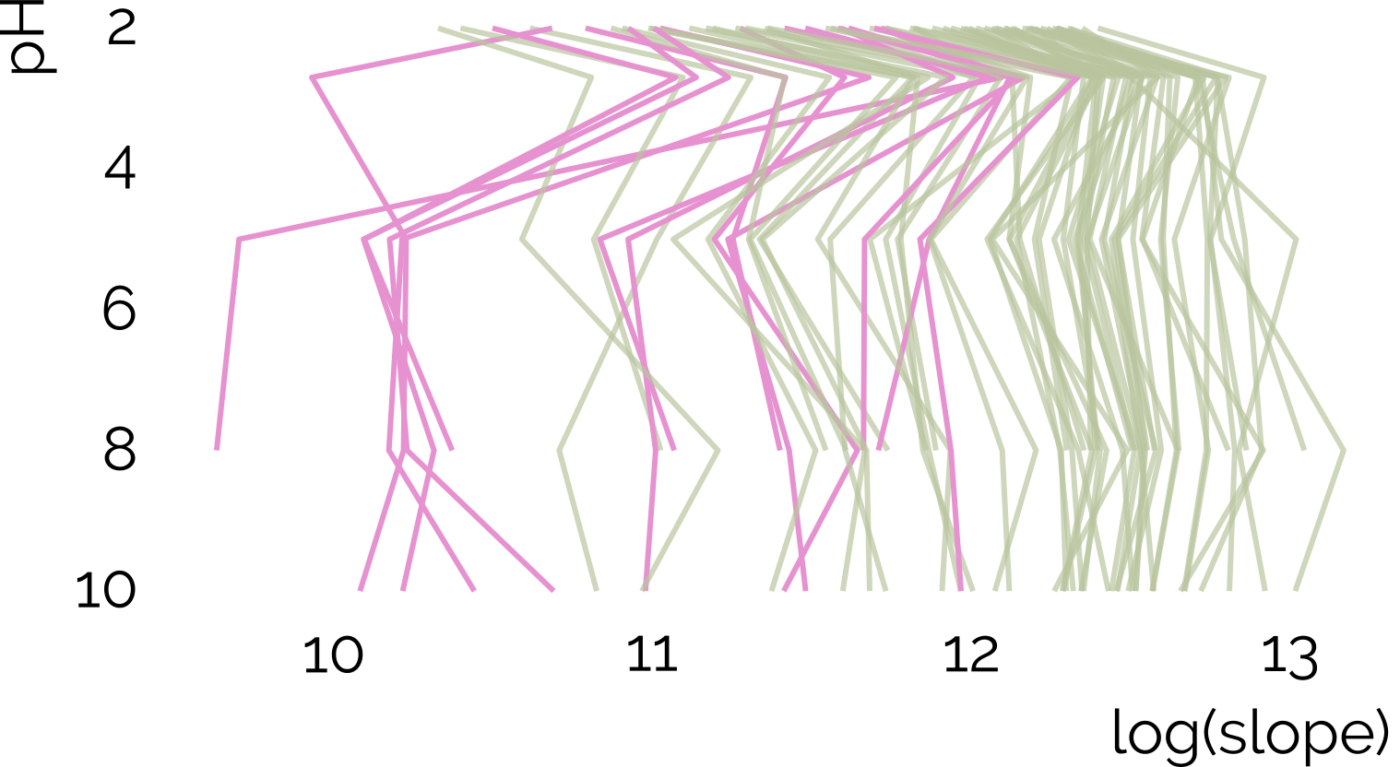
Complementary methods for structural assignment of isomeric candidate structures in non-target liquid chromatography ion mobility high-resolution mass spectrometric analysis
Masoumeh Akhlaqi, Wei-Chieh Wang, Claudia Möckel, Anneli Kruve
Anal Bioanal Chemy A 2022
DOI: 10.1007/s00216-023-04852-y
Non-target screening with LC/IMS/HRMS is increasingly employed for detecting and identifying the structure of potentially hazardous chemicals in the environment and food. Structural assignment relies on a combination of multidimensional instrumental methods and computational methods. The candidate structures are often isomeric, and unfortunately, assigning the correct structure among a number of isomeric candidate structures still is a key challenge both instrumentally and computationally. While practicing non-target screening, it is usually impossible to evaluate separately the limitations arising from (1) the inability of LC/IMS/HRMS to resolve the isomeric candidate structures and (2) the uncertainty of in silico methods in predicting the analytical information of isomeric candidate structures due to the lack of analytical standards for all candidate structures. Here we evaluate the feasibility of structural assignment of isomeric candidate structures based on in silico–predicted retention time and database collision cross-section (CCS) values as well as based on matching the empirical analytical properties of the detected feature with those of the analytical standards. For this, we investigated 14 candidate structures corresponding to five features detected with LC/HRMS in a spiked surface water sample. Considering the predicted retention times and database CCS values with the accompanying uncertainty, only one of the isomeric candidate structures could be deemed as unlikely; therefore, the annotation of the LC/IMS/HRMS features remained ambiguous. To further investigate if unequivocal annotation is possible via analytical standards, the reversed-phase LC retention times and low- and high-resolution ion mobility spectrometry separation, as well as high-resolution MS2 spectra of analytical standards were studied. Reversed-phase LC separated the highest number of candidate structures while low-resolution ion mobility and high-resolution MS2 spectra provided little means for pinpointing the correct structure among the isomeric candidate structures even if analytical standards were available for comparison. Furthermore, the question arises which prediction accuracy is required from the in silico methods to par the analytical separation. Based on the experimental data of the isomeric candidate structures studied here and previously published in the literature (516 retention time and 569 CCS values), we estimate that to reduce the candidate list by 95% of the structures, the confidence interval of the predicted retention times would need to decrease to below 0.05 min for a 15-min gradient while that of CCS values would need to decrease to 0.15%. Hereby, we set a clear goal to the in silico methods for retention time and CCS prediction.
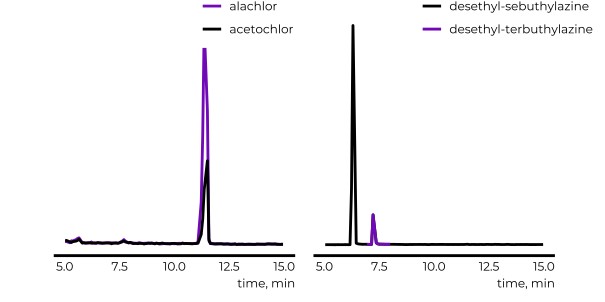
Electrospray Ionization Efficiency Predictions and Analytical Standard Free Quantification for SFC/ESI/HRMS
Stefan Bieber, Thomas Letzel, Anneli Kruve
JASMS 2023
Supercritical fluid chromatography (SFC) is a promising, sustainable, and complementary alternative to liquid chromatography (LC) and has often been coupled with high resolution mass spectrometry (HRMS) for nontarget screening (NTS). Recent developments in predicting the ionization efficiency for LC/ESI/HRMS have enabled quantification of chemicals detected in NTS even if the analytical standards of the detected and tentatively identified chemicals are unavailable. This poses the question of whether analytical standard free quantification can also be applied in SFC/ES/HRMS. We evaluate both the possibility to transfer an ionization efficiency predictions model, previously trained on LC/ESI/HRMS data, to SFC/ESI/HRMS as well as training a new predictive model on SFC/ESI/HRMS data for 127 chemicals. The response factors of these chemicals ranged over 4 orders of magnitude in spite of a postcolumn makeup flow, expectedly enhancing the ionization of the analytes. The ionization efficiency values were predicted based on a random forest regression model from PaDEL descriptors and predicted values showed statistically significant correlation with the measured response factors (p < 0.05) with Spearman’s rho of 0.584 and 0.669 for SFC and LC data, respectively. Moreover, the most significant descriptors showed similarities independent of the chromatography used for collecting the training data. We also investigated the possibility to quantify the detected chemicals based on predicted ionization efficiency values. The model trained on SFC data showed very high prediction accuracy with median prediction error of 2.20×, while the model pretrained on LC/ESI/HRMS data yielded median prediction error of 5.11×. This is expected, as the training and test data for SFC/ESI/HRMS have been collected on the same instrument with the same chromatography. Still, the correlation observed between response factors measured with SFC/ESI/HRMS and predicted with a model trained on LC data hints that more abundant LC/ESI/HRMS data prove useful in understanding and predicting the ionization behavior in SFC/ESI/HRMS.
